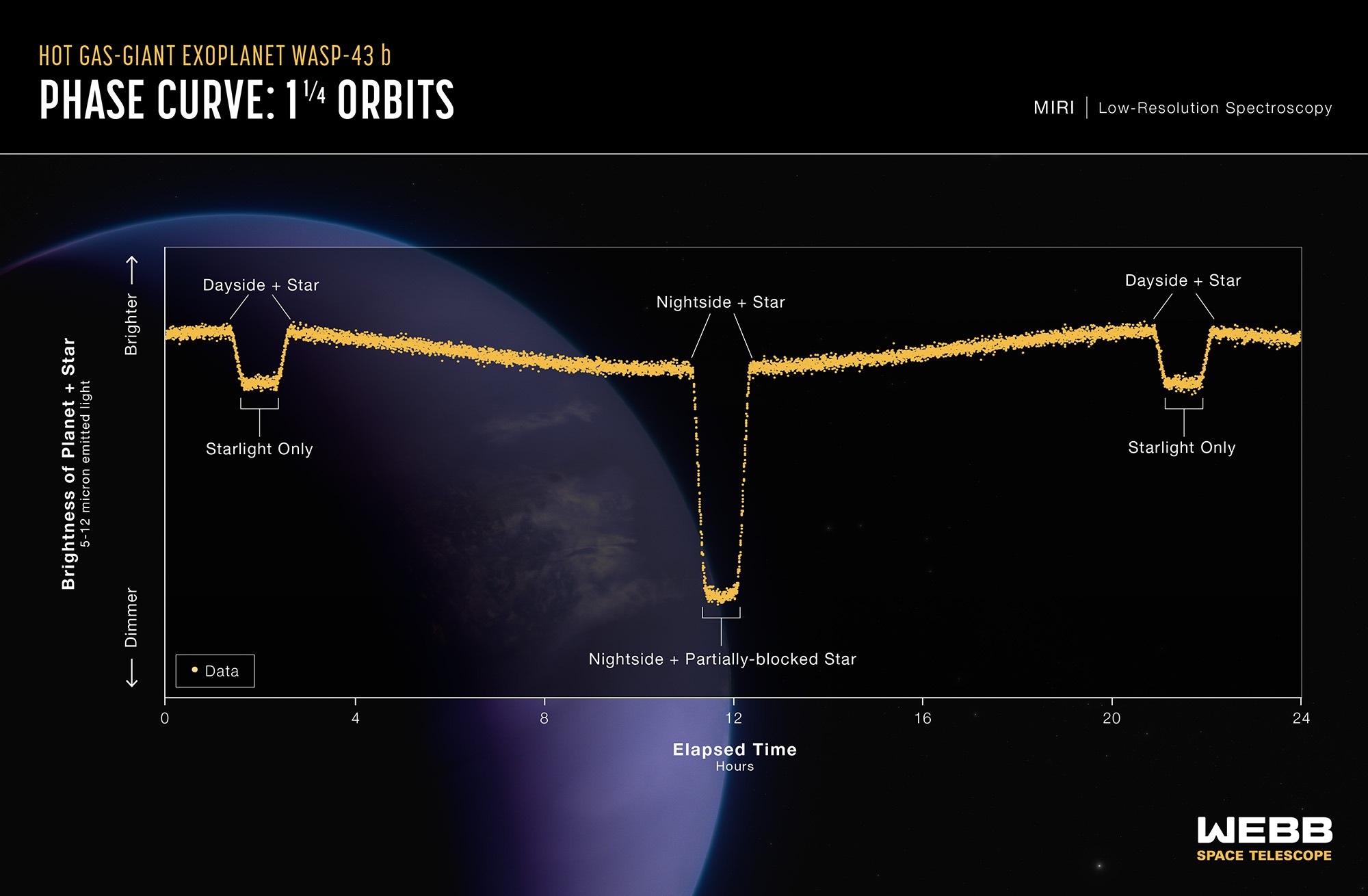The scientific instruments aboard NASA’s James Webb Space Telescope are so sensitive that they can detect the weather on an exoplanet 280 light-years away. A team of international scientists used the telescope’s mid-infrared spectrometer to create a weather map on the surface of WASP-43b, a gas giant in the constellation Sextans.

The data obtained show that the exoplanet has thick clouds on one side and clear skies on the other. Strong equatorial winds of up to 8000 km/h are also blowing on WASP-43b — this is a very detailed picture, given the huge distance to the exoplanet.
WASP-43b orbits its star at a distance of only 2.7 million km, which leads to extremely high temperatures on the surface, which classifies it as a “hot Jupiter”. This exoplanet is significantly hotter than any other gas giants in our Solar System.

WASP-43b was first discovered in 2011. It was previously studied by the Hubble and Spitzer space telescopes.
“With Hubble, we could clearly see that there is water vapor on the dayside. Both Hubble and Spitzer suggested there might be clouds on the nightside. But we needed more precise measurements from Webb to really begin mapping the temperature, cloud cover, winds, and more detailed atmospheric composition all the way around the planet,” said Taylor Bell, a researcher at the Bay Island Institute for Environmental Studies and lead author of the study published in the journal Nature Astronomy.

By analyzing the infrared light that the planet emits, scientists were able to determine its temperature: 1600 °C on the daytime side – quite enough to melt iron. And using 3D models of the atmosphere, scientists were even able to simulate what the atmosphere of a gas giant might look like.

Earlier, we reported on how NASA set a record of 5,500 confirmed exoplanets.
According to nasa.gov
Follow us on Twitter to get the most interesting space news in time
https://twitter.com/ust_magazine


